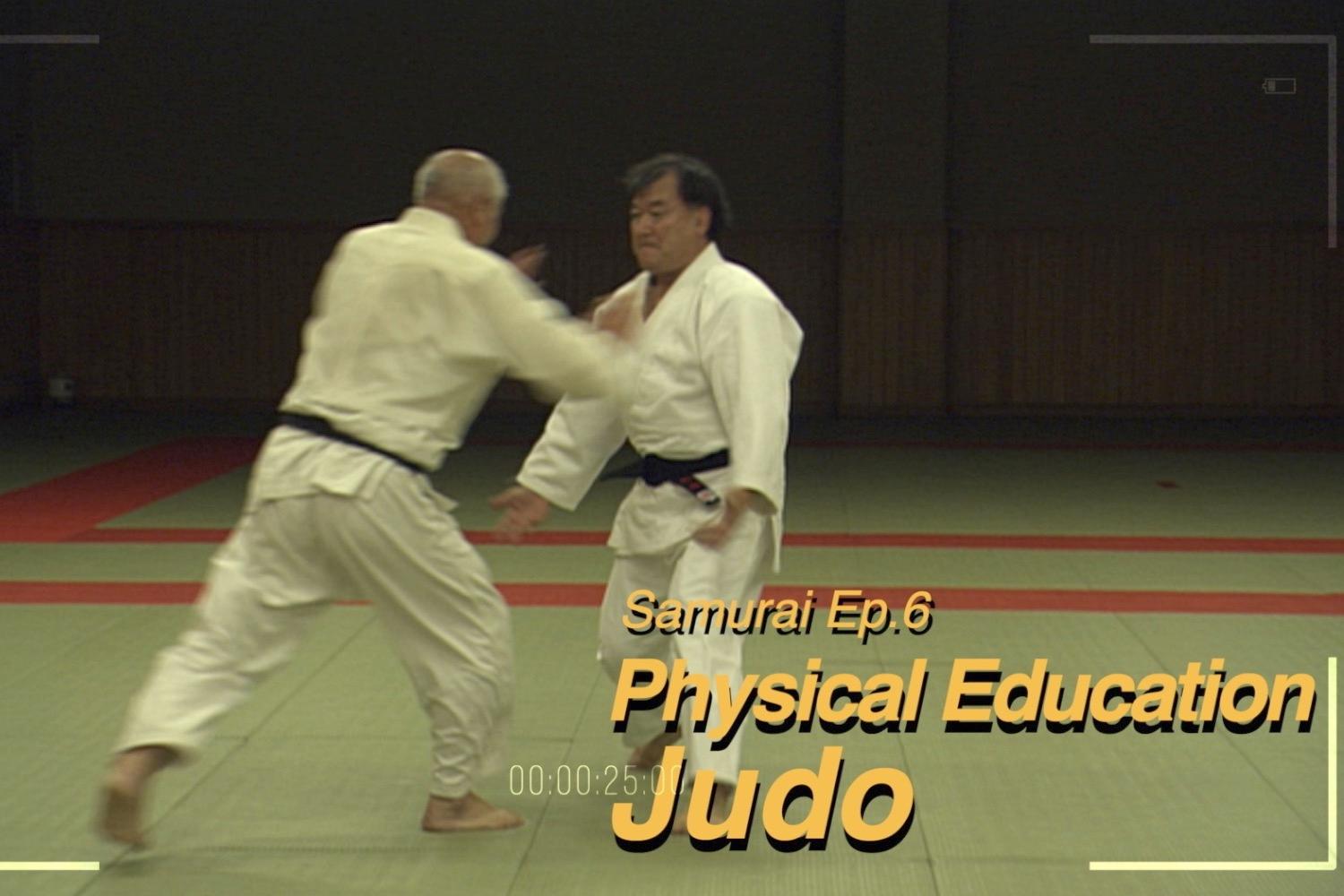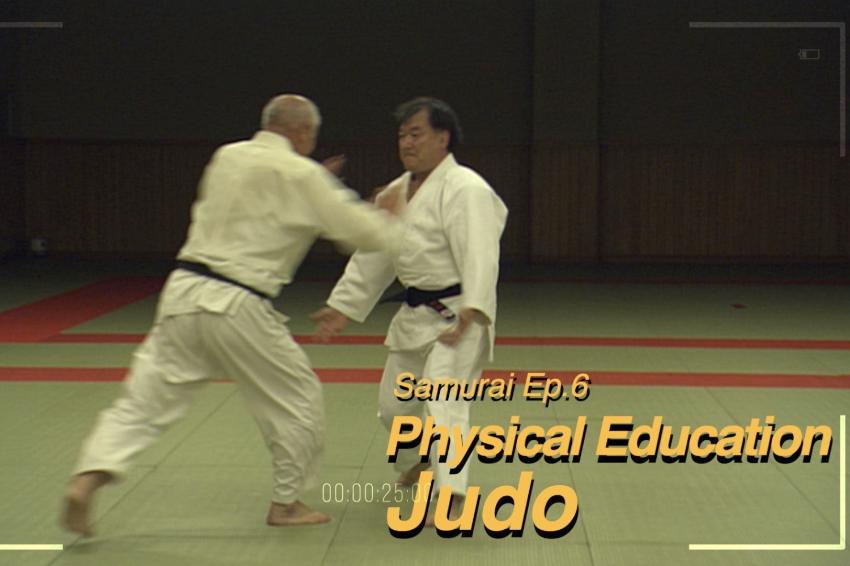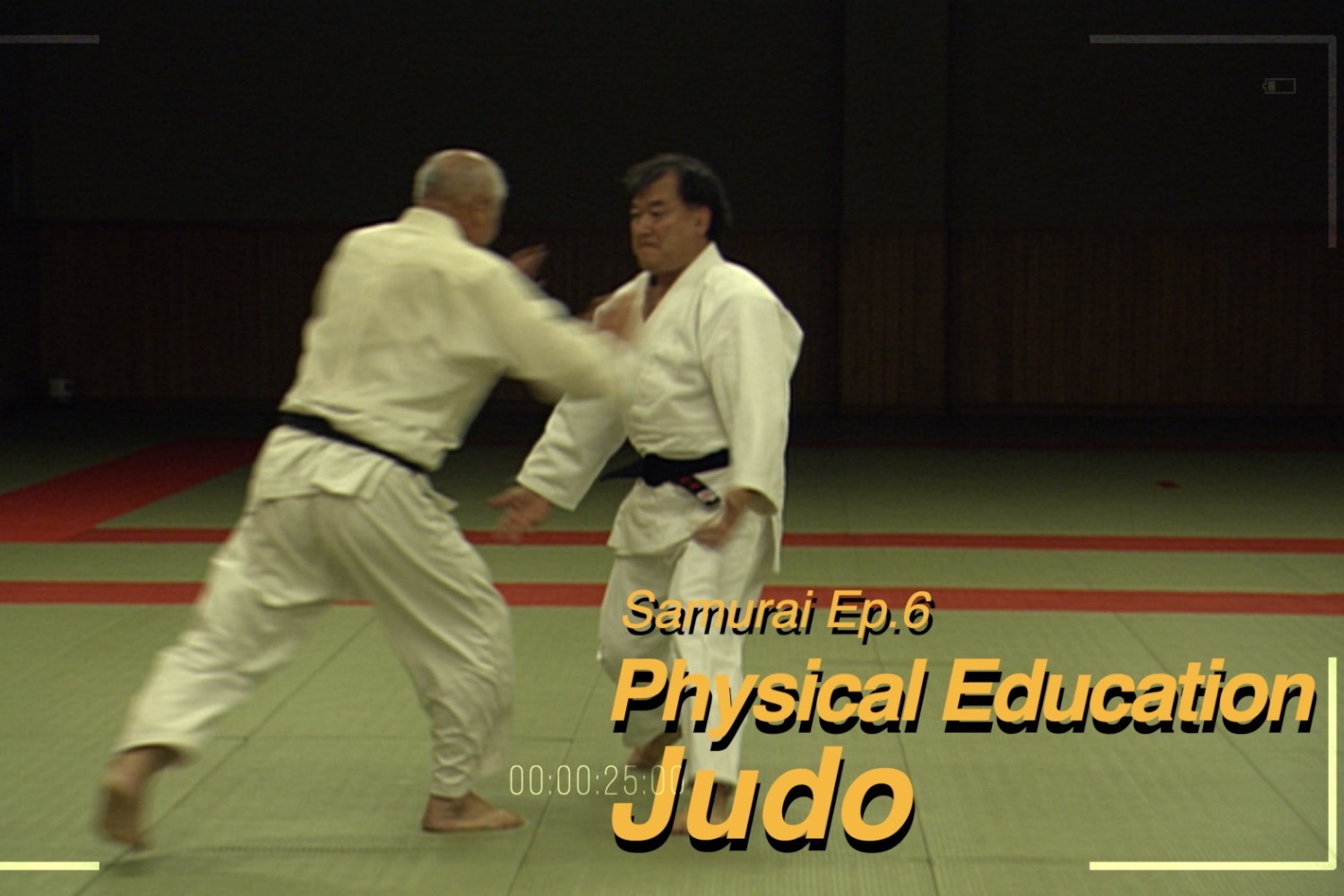2003년 다큐멘터리
생활 속의 무술
무사(武士)
6화 [일본 무술의 스포츠화1 - 유도(柔道)]
- 교토칸(講道館) 외경
그렇다면 일본의 다른 무술들에는 어떤 변화가 일어났을까?
- 유도 고식(古式) 시범
19세기 말 일본의 전통 무술인 유술(柔術
)은 현대 유도로 변화를 겪는다.
그 당시 유도에는 태권도의 품새에 해당하는 ‘형’과 ‘대련’ 두 가지가 있었다.
지금 보이는 이 동작들이 유도의 ‘형’에 해당하는 21가지 동작이다.
그런데 이 유도의 ‘형’은 현대 유도가 대련 위주로 흐르면서 거의 사라졌다.
유술이 현대 유도로 개발된 계기 역시 외세에 맞서기 위해서였다.
페리의 침략 이후, 에도 막부시대가 막을 내리고 메이지 천황의 시대가 열린다. 일본은 천황을 중심으로 서양의 문물을 받아들여 부국강병을 꾀한다. 이른바 메이지 유신이다.
- 교토칸(講道館) 현판, 수련생들
유도의 본산으로 불리는 교토칸(講道館)이 만들어진 것은 그 무렵이었다.
일본은 물론 전세계에서 유도의 정수를 배우기 위해 이곳으로 몰려든다.
- 가노 지고로(嘉納治五郎)
전통무술 유술을 현대 유도를 만든 사람은 가노 지고로(嘉納治五郎)였다.
당시 그의 나이는 겨우 22살이었다. 하지만 동경제국대학을 졸업한 수재였고, 시대의 흐름을 누구보다 잘 알았다.
쿄토칸을 만든 것도 서양 제국주의의 침략에 대응하기 위해서였다.
- 무라타 나오키, 교토칸(講道館) 사서 자료부장 인터뷰
(일본에서도 새시대에는 체육을 교육 속에 도입해서
머리만이 아니라 몸도 튼튼하게 하지 않으면 완전한 인간이 아니라는 생각에 입각해 체육, 스포츠를 적극적으로 장려하고)
- 초기 교토칸(講道館) 사진 자료
전통무술이 대중교육의 한 방법이 된 것이다.
이 과정에서 유술의 위험한 기술이 제거되고 복장이 단순해졌다.
체계적인 교육을 위해 급과 단 체계도 만들어졌다.
가노 지고로가 중시한 것은 기술보다는 정신이었다.
충과 효로 무장하고 전쟁에 나아가 목숨을 아끼지 않는 무사도(武士道) 정신.
그는 이것을 되살리고자 했던 것이다.
- 야스쿠니 신사 외경
이런 움직임은 일본의 군국주의와 흐름을 같이 한다.
야스쿠니 신사는 1869년, 메이지 유신을 위해 목숨을 바친 3천여명의 무사(武士)를 위해 지어졌다.
하지만 그후 청일, 러일 전쟁, 세계 1,2차대전 등 침략전쟁의 전사자들까지 모시고 있다.
- 야스쿠니 신사 내부
야스쿠니 신사가 일본 군국주의의 상징으로 알려져 있는 이유도 그 때문이다.
그런데 이곳 전시관의 한쪽에 무사(武士)들의 유물이 전시돼 있다.
- 야스쿠니 신사 전시물
주군에 대한 철저한 복종, 죽음에 대해 초연한 자세.
이런 무사도(武士道) 정신이 일본의 군국주의적 팽창과 무관치 않다는 것을 보여준다.
- 야스쿠니 신사, 전쟁영웅들 사진
A급 전범들이 이곳에선 전쟁영웅으로 기려진다.
천황의 이름으로 전쟁에 나아가 천황을 위해 목숨을 바쳤기 때문이다.
- 야스쿠니 신사 전시물
하지만 2차대전 패전과 함께 무사(武士)의 칼도 빛을 잃는다.
- 일본의 이미지들
아시아를 호령하고 미국을 넘보던 대제국 일본은 미국의 신탁통치를 받는 신세로 전락한다.
군국주의의 온상으로 지목된 무술도장들도 문을 닫는다.
Japanese warrior: Samurai, Episode 6
[Changes in Japanese Martial Arts: Physical Education - Judo]
2003 Documentary, Martial Arts in Life
00:00:01 - KyotoKan (講道館) Apocrypha
00:00:03 So, what kind of changes have occurred in other Japanese martial arts?
00:00:11 - [Judo Classical Demonstration
00:00:22 At the end of the 19th century, the traditional Japanese martial art, jujutsu, undergoes changed to modern judo.
00:00:31 At that time, there were two types of judo, 'kata' and 'game', which corresponded to the poomsae of Taekwondo.
00:00:38
00:00:40 These movements shown now are 21 movements that correspond to the 'types' of judo.
00:00:48
00:00:56 However, this “older brother” of judo almost disappeared as modern judo mainly flowed in sports.
00:01:04
00:01:13 The reason that jujutsu was developed as modern judo was also to fight foreign powers.
00:01:20
00:01:21 After the invasion of Perry, the Edo Shogunate period ended and the era of Emperor Meiji began.
00:01:27
00:01:32 Japan, with the emperor as the center, embraces Western culture and seeks to become wealthy and powerful.
00:01:38 This is the so-called Meiji Restoration.
00:01:40 - Kyoto-Kan (講道館) signboard,
00:01:44 known as the headquarters of judo for trainees was created.
00:01:49
00:01:50 Not only from Japan but from all over the world flock here to learn the essence of judo.
00:01:59
00:02:10 - Jigoro Kano
00:02:13 (嘉納治五郎) was the creator of modern Judo from the traditional martial art of jujutsu.
00:02:19 He was only 22 years old at the time.
00:02:26 However, he was a gifted student who graduated from the Tokyo University of Economics
00:02:30 and knew the trend of the times better than anyone.
00:02:36 The Kyoto Kan was created in response to the invasion of Western imperialism.
00:02:42 - Interview with Naoki Murata, head of the library at Kyotokan)
00:02:44 (As Chigoro Kano traveled around the world,
00:02:50 he was impressed to see people who trained their bodies through sports go out into society and become great people.
00:03:15 - Early Kyotokan photo
00:03:19 material Traditional martial arts became a method of public education.
00:03:23 In this process, the dangerous techniques of jujutsu were removed and the clothes were simplified.
00:03:32 A class and division system was also created for systematic education.
00:03:38 What Jigoro Kano placed more importance on was the spirit rather than the technique.
00:03:42 Armed with loyalty and filial piety, the spirit of samurai who spares no lives to go to war.
00:03:47
00:03:52 He wanted to bring it back.
00:03:58
00:04:02 -YasukuniShrine Apocrypha
00:04:04
00:04:05 This movement is in line with Japanese militarism.
00:04:10
00:04:12
00:04:13 was built in 1869 to honor the 3,000 warriors who gave their lives for the Meiji Restoration.
00:04:21
00:04:23 However, since then, even those who died in wars of aggression such as the Sino-Japanese,
00:04:35 Russo-Japanese Wars and World Wars I and II are enshrined.
- Inside the Yasukuni Shrine This is why Yasukuni Shrine is known as a symbol of Japanese militarism.
00:04:45 However, relics of the samurai are displayed on one side of the exhibition hall.
00:04:51
00:05:01 Thorough obedience to the master,
00:05:03 a detached attitude toward death.
00:05:06 It shows that this spirit of samurai has nothing to do with Japan's militaristic expansion.
00:05:12
00:05:16 - Yasukuni Shrine, photos of war heroes
00:05:20 Class A war criminals are honored as war heroes here.
00:05:24 Because he went to war in the name of the emperor and gave his life for the emperor.
00:05:31
00:05:34
00:05:36 However, with the defeat of the Second World War, the sword of a samurai also loses its light.
00:05:48
00:05:54
00:05:56 Japan, a great empire that ruled Asia and surpassed the United States, falls under the trusteeship of the United States.
00:06:10 Martial arts studios designated as hotbeds of militarism are also closed.
00:06:14







